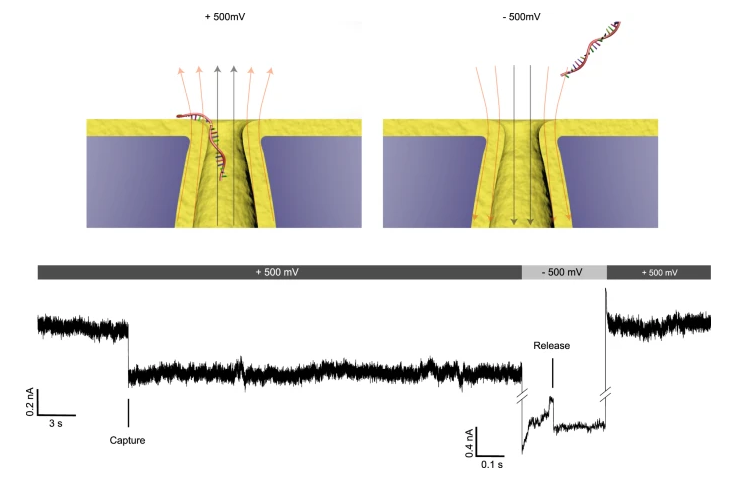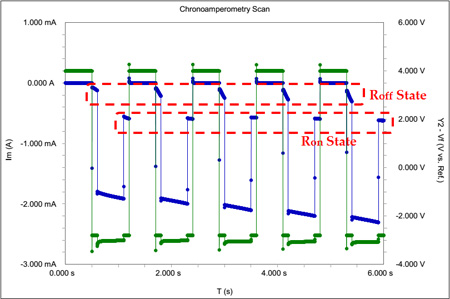Solid-State Nanopore Sensors

Solid-state nanopores allow high-throughput single-molecule detection but identifying and even registering all translocating small molecules remain key challenges due to their high translocation speeds. We show here the same electric field that drives the molecules into the pore can be redirected to selectively pin and delay their transport. A thin high-permittivity dielectric coating on bullet-shaped polymer nanopores permits electric field leakage at the pore tip to produce a voltage-dependent surface field on the entry side that can reversibly edge-pin molecules. This mechanism renders molecular entry an activated process with sensitive exponential dependence on the bias voltage and molecular rigidity. This sensitivity allows us to selectively prolong the translocation time of short single-stranded DNA molecules by up to 5 orders of magnitude, to as long as minutes, allowing discrimination against their double-stranded duplexes with 97% confidence.
Ion Logical Circuits


We have built an integrated fluid phase ionic logic circuit by integrating existing ionic capacitors, nanopore resistors, bipolar membrane ion diodes and a unique nonlinear ion memristor, all for strong physiological electrolytes. The ion memristor is based on a non-equilibrium anodic oxidation reaction of a silicon microelectrode in an aqueous solution. It shows a stable pinched hysteretic current-voltage characteristic, that can be utilized to synthesize fluid-based memory arrays with on-off logic components. By integrating ion memristors with micro/nanofluidic systems, together with crossbar logic, ionic NAND/NOR gates and latches with high speeds can be made. We use these ionic logic components to activate, read individual ion current based sensors while store and retrieve intermediate values in multiple sensor arrays, reducing the complexity of operating micro/nanofluidic system. We envision that excitable, bistable and oscillatory ionic circuits that mimic neurons in the human body can also be built. Direct integration with neuron cells without intermediate metallic or semiconductor circuits is also planned.
Asymmetric Nanopore Continuous Fractionation of Nanocarriers

We are developing a high-yield exosome isolation and fractionation technology that has far higher yield than ultra centrifugation UC, excluded volume precipitation Exoquick and size exclusion chromatography qEV. We asymmetrically wet etch ion-track nanoporous membranes so that the filtering tip end, with tunable diameter from 10 nm to 500 nm, dominates the flow resistance. This reduces the total shear in the nanofluidic pore by order of magnitude and hence minimizes exosome lysing and fusion in nanofiltration and in UC.